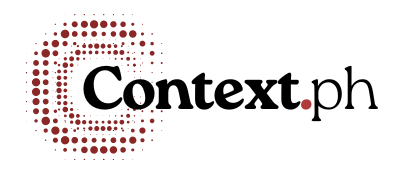Residential real estate prices of various types of new housing units in the Philippines continued to increase in 4Q 2023, rising by 6.5 percent year-on-year, albeit lower than the 12.9 percent growth in 3Q 2023. Quarter-on-quarter, the index contracted by 3.6 percent, which is a reversal of the 3.4 percent growth registered in 3Q 2023.
On a YoY basis, residential property prices in the National Capital Region (NCR) rose by 4.3 percent in 4Q 2023 as the growth in the prices of single-detached/attached houses and townhouses outweighed the decline in the prices of condominium units.
Similarly, residential property prices in areas outside the NCR (AONCR) grew by 7.8 percent, driven by annual increases in the prices of all types of housing units, except for duplex housing units where growth contracted.
On a QoQ basis, residential property prices declined by 9.4 percent and 1.2 percent in the NCR and AONCR, respectively.
Prices rise across all housing types, except duplex.
By housing type, prices of single-detached/attached houses registered the highest YoY growth rate in 4Q 2023 (at 9.5 percent), followed by townhouses (at 4.9 percent), and condominium units (at 4.1 percent). Meanwhile, prices of duplex housing units decreased by 33.5 percent.
On a QoQ basis, trends by housing type reversed as only townhouses recorded a price increase in 4Q 2023 (at 4.5 percent) compared with the 3Q 2023 results wherein only townhouses registered a price decrease (at -6.7 percent). In 4Q 2023, prices of duplex housing units declined the fastest (by 42 percent), followed by condominium units (by 8.6 percent), and single-detached/attached houses (by 3.3 percent).
Nationwide loan availments for new housing units grow at double-digit YoY and QoQ rates.
In 4Q 2023, the number of residential real estate loans (RRELs) granted for all types of new housing units in the Philippines grew by 30.5 percent YoY, with those from the NCR and AONCR rising by 38.5 percent and 26.6 percent, respectively. Likewise, nationwide housing loan availments continued to grow by 26.9 percent QoQ, following the 20.3 percent and 30.7 percent increase in the number of RRELs in the NCR and AONCR, respectively (Figure 3a).
The total number of RRELs granted in the Philippines rose by 25.2 percent, with the pace of growth almost the same in the NCR (at 25.8 percent) and AONCR (at 25 percent). Meanwhile, the total number of transactions grew by 14.4 percent QoQ, brought about by the 10.5 percent and 16.2 percent increase in the number of RRELs in the NCR and AONCR, respectively (Figure 3b).
In Q4 2023, the appraised value of new housing units in the country averaged to P89,042 per square meter, registering a 19.1 percent growth over the comparable year-ago level as opposed to the 3.4 percent contraction from the quarter-ago level.
Similarly, the average appraised value per square meter in the NCR increased by 5.5 percent YoY but declined by 14.3 percent QoQ to P134,178 per square meter. Meanwhile, in AONCR, the average appraised value per square meter expanded by 31.8 percent YoY and 18.1 percent QoQ to P65,186. It may be noted that the average appraised value of properties in the NCR is double that of AONCR.
In 4Q 2023, 84.5 percent of residential real estate loan (RRELs) transactions were used to purchase new housing units. Meanwhile, by type of housing unit, most of the residential property loans were used for the acquisition of single-detached/attached houses and condominium units both at 42.6 percent, followed by townhouses (14.7 percent).
Most of the RRELs granted in the NCR were for the purchase of condominium units, while RRELs granted in AONCR were for the purchase of single-detached/attached houses. By region, 30.7 percent of the total number of RRELs granted were from the NCR. The other regions, which contributed significantly to the number of RRELS granted, were as follows: CALABARZON (33.1 percent), Central Luzon (12 percent), Western Visayas (5.8 percent), Central Visayas (5.3 percent), Davao Region (5.2 percent), and Northern Mindanao Region (1.9 percent). The said regions, including the NCR, comprised 94 percent of the total housing loans granted by banks (Figure 6).







